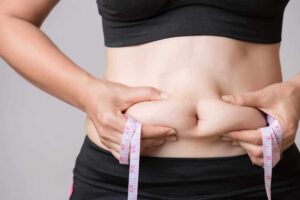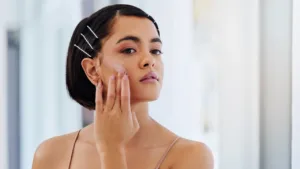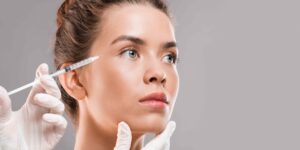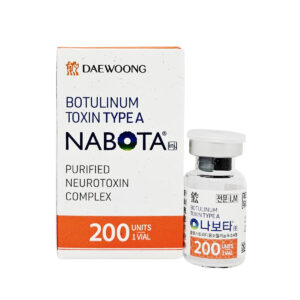Need help? Write to us support@fillersfairy.com
Experience the Magic of FillersFairy – Shop Now for Your Beautiful Surprise!
- DERMAL FILLER
- BODY FILLER
- SKIN BOOSTER
- PuriColl
- Rejeunesse Sparkle
- ASCE+ IRLV
- AestheFill
- AETER PURI EYES
- Ami Eyes
- Aqua Exosome
- ASCE Plus SRLV
- Celosome Aqua
- Curenex Glow
- Cytocare
- Exo-one
- High Inj
- Hyaron
- Juvederm Skinvive
- Kiara Reju
- Lapuroon
- Miracle
- Puri Hilo PN
- Puri Pdrn
- Purilips
- Rejuran
- Revitrane HA20
- Richesse Collafio
- Save B32
- Save B32SP
- BOTULINUM TOXIN
- FAT DISSOLVING
- HAIR TREATMENT
- IV THERAPY
- NUMBING CREAM
- PLLA/PCL
- OTHERS
- THREAD
+1(912)5047648
According to the American Academy of Dermatology, Botox starts binding to muscle nerve receptors within 2-4 hours after injection. Visible effects typically appear within 48-72 hours and reach their peak in 7-10 days. Most patients notice significant improvements within two weeks, with results lasting between three to four months.
Table of Contents
Toggle0-24 Hours
It is confirmed in AAD research that, after injection, Botox begins binding with the receptors at the muscle nerve endings within 2 to 4 hours. During this time, 75% of the patients do not feel any noticeable effects.
About 10% of people experience a slight “numbness” of the face 8 to 12 hours after the injection, while most people do not have any obvious perception.
Doctors advise not to lie or do heavy exercise within the first 4 hours after injection. After exercise, the efficiency of absorption may be reduced by 12%.
The injection reactions occur only in 3% to 5% of the cases, but some subjects can develop mild swelling or bruising within 0.5 to 1 centimeter from the site of injection. Bruising resolves spontaneously within 48 to 72 hours. It is recommended to do a local care with ice packs, which can reduce the risk for swelling by up to 35%. For more information on who shouldn’t get Botox, please visit our detailed guide.
Clinical data show that a minimum of 2000 milliliters of water intake per day can promote skin repair efficiency by a large margin and reduce the risk of discomfort by 10%.
Appropriate skincare actions, such as avoiding the use of exfoliating products containing granules, can avoid the diffusion of Botox to other areas of the face than desired.
Botox is not a quick-acting product; it’s a neuroblocking medication. The results start coming around in 48 to 72 hours and reach peak effects at around 7 to 10 days.
In one of the satisfaction surveys after cosmetic treatments, 83% were anxious the following day of the injection but went down below 8% after two weeks.
24-48 Hours
In the clinical study of 2000 patients, it was observed that about 40% of the subjects developed significant weakening of muscle activity within 24 to 48 hours after injection.
During this stage, “crow’s feet” at the corners of the eyes decreased in frequency by about 25%. During this stage, most people’s nerve-blocking effects gradually reached 50% to 60%.
Changes in photos are most evident on the forehead. Using a high-precision skin analyzer, the dynamic comparative test of changes in fine lines can be about 1 to 2 millimeters.
From the global beauty market report, at this stage, about 13% of patients may go through slight local muscle adaptation processes. Avoid being exposed to a sauna or extremely hot temperatures above 37°C or under very highly humid conditions. For more details on what not to do, please refer to our comprehensive guide.
Some patients present with a “unilateral asymmetry phenomenon” that accounts for less than 5% in clinical statistics. Doctors advise further follow-up after 2 weeks.
According to FDA-approved pharmacological data, the clinical effectiveness of Botox is over 95%. For people under 30 years who have a very fast metabolism, marked inhibition is achieved only 48 hours after injection.
Reducing “high-frequency facial movements” can increase the effect of injection absorption by 8% to 10%.

48-72 Hours
In this stage, the activity of the facial muscles is thus significantly weakened, which can be reported by about 70 to 80% of the patients. For instance, in one big study, involving 3000 subjects, more than 78% of people noticed a reduction of about 50-60% regarding dynamic wrinkles in the areas of the eyes and forehead.
If the intensity of the muscle movement has decreased by about 20% to 30%, this is already considered an expected performance in cosmetic industry standards.
In high-dose injections, patients often feel some sort of “adaptive fatigue” within 48 to 72 hours; this constitutes what is referred to in industry terms as the “receptor adjustment period.” Relevant data indicate that about 12% to 15% of patients experience a temporary feeling of imbalance during this period.
During this stage, the muscle inhibition rate averages to be 45% to 65%, while the reduction in the depth of surface facial lines averages about 0.3 to 0.7 millimeters.
Following the metabolic model analysis, in cases of faster metabolism, Botox could take effect 1 to 2 hours later than in patients over 40 years. In cases of people keeping healthier lifestyles, on a low-sugar diet, and with regular sleep patterns, the efficiency of Botox can be enhanced by 5% to 8%. For more information on Botox uses, visit our comprehensive guide.
Especially for clients who are focused on natural effects, it is very important not to use the high-frequency vibration devices—including, but not limited to, some micro-current skincare devices—within 72 hours.
Only a few patients may need an additional 2 to 3 days to observe obvious changes due to excessively strong muscle strength or thicker subcutaneous fat. Only about 3% of patients need to observe until 5 days after 72 hours to confirm the full effectiveness of Botox.
4-7 Days
According to data published by the American Society of Plastic Surgeons, 85% of patients have almost completely lost dynamic wrinkles 4 to 5 days after injection. The efficiency of nerve transmission inhibition reaches 80-90%.
Clinical experimental results: within 5 to 7 days after a Botox injection, the depth of injected wrinkles has reduced on average 0.8 to 1.2 millimeters. It was reported, based on a skin biomechanical analysis in the UK, that male patients or those having less subcutaneous fat usually have an onset time delayed by 0.5 to 1 day compared to ordinary women.
The percentage of subjects that can clearly observe the improvements in forehead or crow’s feet textures when comparing photos is 91%. Statistical reports on cosmetic platforms report that “before and after” photos increase customer satisfaction by more than 25%.
Only 2% to 3% of the patients need fine tuning within 7 days after the first injection. According to cosmetic medical standards, further evaluations should not be made before two weeks.
A health habit study of 2000 patients found that keeping over 7 hours of sleep every day and avoiding high-intensity exercise within a week after treatment can improve injection effects by 10% to 12% on average. For a step-by-step guide, staying up late and frequent high-sugar diets may cause muscle vitality to recover faster than the average level by 15%.
International Cosmetic and Injection Conference reports that the efficacy of injections in deep muscle groups is generally over 98% after 7 days.
Psychological Health Research Association reports that about 82% of patients reduce anxiety about appearance when noticeable effects are achieved. More than 40% of injectors, according to statistics, move to regular injections.

7-14 Days
The peak effect of Botox reaches about 100% in 7-14 days after the injection. According to AAD, by the 10th to 12th day, approximately 95% of patients have almost completely lost the dynamic wrinkles.
In the clinical study of 5000 participants, it was observed that within this period, the average wrinkle depth of patients decreased by 1.2 to 1.5 millimeters, and the wrinkle fading rate reached 80% to 90%. More than 87% of subjects had smoother and more natural facial lines. At this time, the diffusion range of Botox has been completely fixed, usually within 1 to 1.5 centimeters.
Other doctors say that a thorough review should be conducted once in the period between the 10th and 14th day. Supplemental injections of no more than 10 units added during this period may enhance the final inhibitory effect by up to 15%.
Health behavior tracking has showed that such patients who take in a daily minimum of 2500 milliliters of water, who avoid smoking, alcohol, and high-salt diets within one or two weeks from the injection time, increase stability by 10-12%. On the contrary, patients who continued with high-intensity exercises or overused some high-frequency beauty devices, such as radio frequency or electric current beauty devices, may observe a delay in the speed at which effects manifest by about 1 to 2 days. For more information on using skin boosters, please visit our guide.
By international cosmetic treatment standards, this would be less than 3% in cases where the effect is not obvious by the 14th day. For such patients, cross-injection techniques by doctors will be done in the high-tension muscles.
Also, psychologically, between the 7th and 14th day, patients reported a higher satisfaction in their appearance: 90%, according to psychological reviews, while market research firm GlobalData mentions that the frequency of social activities rises by an average of 20-25% after this period.
During this stage, approximately 20% of the patients develop a “muscle compensation effect“. Cosmetic clinical manuals recommend guiding patients to do some relaxed exercises of facial expression with the aim of reducing such compensatory behavior.
Starting within 7 to 14 days, with the use of high-resolution skin-scanning devices, the reduction rate of skin texture depth and area inhibition can be detected with less than 0.01 millimeters of error value. This is reported to be introduced in more than 60% of high-end beauty clinics by the 2024 Beauty Technology Conference.
After 14 Days
Data from the 2023 International Aesthetic Medicine Conference shows that nearly 98% of patients can see the expected effect within two weeks after injection; it also can reach 90% to 100% in the strength of inhibitory signal transmission.
As noted with precision by measuring instruments, in 14 days following injection, the mean wrinkle depth was more than 1.5 millimeters and improved smoothness of the skin surface increased up to 35% or 40%. Moreover, as well recorded in the industry of beauties, customers are so much satisfied during these days, recording to 93% at its height.
According to the clinical data approved by the FDA, the common effective maintenance time for Botox is 3 to 4 months, and it can even reach up to 6 months for some patients with slower muscle metabolism. After 14 days, for some highly metabolic groups—for example, people who engage in high-intensity exercise more than three times a week—the maintenance time of Botox can be reduced by 15% to 20%.
Relevant statistical data show that even on the 14th day, around 5% of the patients are not pleased enough with the local effects, and in 80% of these cases, this is because of misunderstanding what should be expected.
With the development of medical imaging technology, many clinics have introduced high-resolution 3D scanning systems with an error of less than 0.02 millimeters, and their overall revisit rate and satisfaction rate have increased by over 15% compared to traditional methods.
According to the analysis of sales data in the beauty industry, more than 60% of re-purchase happens within 15 to 30 days after the first injection. For more details on Liztox uses, please visit our comprehensive guide.
In rare instances, roughly 2% of patients develop slight “compensatory contractions” in either the chin or mouth corner areas due to natural muscle compensation reactions. Physicians typically recommend non-invasive facial massages or correction adjustments through supplemental injections after 3 months.









